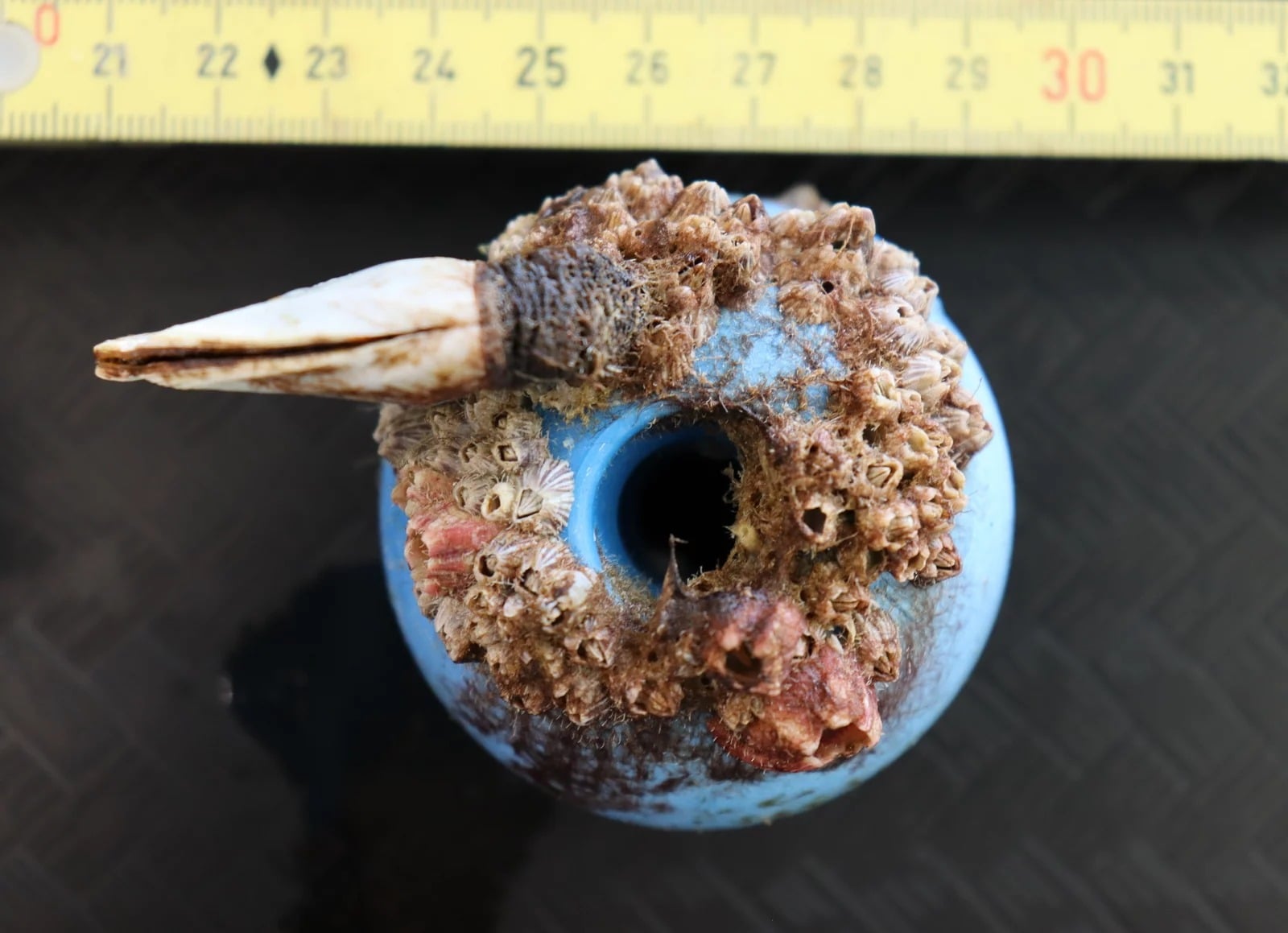
(Credit: Linsey Haram/SERC Marine Invasions Lab)
Researchers have long known that the Great Pacific Garbage Patch — the massive accumulation of plastic waste in the North Pacific Ocean — is home to a variety of sea life. However, they had assumed they were all open ocean inhabitants. Now, a new study has found that it also harbors a surprisingly large number of coastal marine species. They include crabs, sea anemones, and worms.
Marine ecologist Linsey Haram's curiosity about ocean plastic inhabitants began after the March 2011 tsunami in Japan. The debris that made its way to many west coast cities was carrying coastal creatures that were alive. This surprised scientists. They had always assumed that the difference in temperature, salinity, and available nutrients would make it hard for coastal species to survive in the open ocean.
To investigate further, Haram and her team from the Smithsonian Environmental Research Center obtained 105 items from the Great Pacific Garbage Patch. They were collected by a nonprofit called The Ocean Cleanup in 2018 and 2019. The objects included buckets, crates, bottles, household items, ropes, and parts of fish traps.
The researchers found that 70 percent of the 484 separate marine organisms living on the debris were species usually found in coastal habitats. They are not sure how they made it out so far. The organisms may have attached themselves to the trash on the coast and eventually floated to the deep sea.
Haram's team noticed that two-thirds of the time, the coastal and open-ocean species lived on the same trash pile. They competed for food and even ate each other. The scientists observed a spotted coastal anemone eating a purple snail native to the open ocean.

(Credit: Linsey Haram/ Smithsonian)
Haram and her team revealed their findings in the journal Nature Ecology and Evolution on April 17, 2023. They believe the high number of coastal species in the open ocean may have unknown consequences on the ocean ecosystems.
Sabine Rech, a marine biologist with the Universidad Católica del Norte in Chile, agrees. "I was surprised that they saw such high numbers of coastal species," she says. "Beyond the surprise, I think the implications could be huge."
Rech was not part of the recent study. But she and her colleagues did a similar survey of marine life on ocean garbage in the South Pacific. However, they did not find such a diverse range of coastal life on it. Rech thinks the harsher, nutrient-poor environment in the South Pacific may make it harder for the creatures to survive. There may also not be as many coastal species in the South Pacific.
Resources: NPR.com, USAtoday.com, Inverse.com
